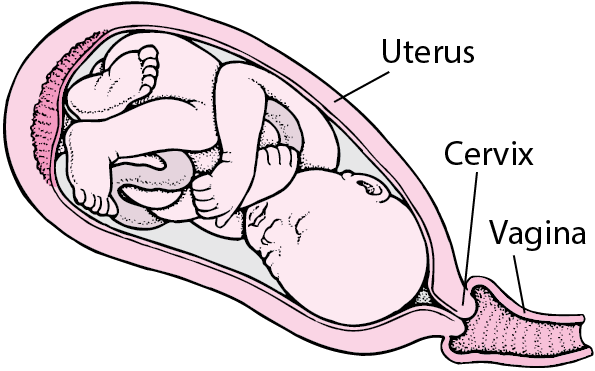
When should you receive treatment for cervical insufficiency?
Antai Cervical Ring is used to treat late miscarriage caused by cervical insufficiency, also known as cervical incompetence or short cervix. Prevention is better than cure. Hence, the earlier you place the Antai Cervical Ring, the better. The best time to place the ring is before pregnancy, followed by early pregnancy (before week 12 of gestation). We recommend placing the ring during the early stages, as it allows the procedure to be much more straightforward. Receiving treatment before the cervix (neck of the womb) starts to shorten and dilate will reduce the risk of miscarriage by a long shot.
What is cervical insufficiency?
Cervical insufficiency is the inability of the cervix to retain fetus, in the absence of uterine contractions or labor (painless cervical dilatation), owing to a functional or structural defect. It is cervical ripening that occurs far from the term. Cervical insufficiency is rarely a distinct and well defined clinical entity but only part of a large and more complex spontaneous preterm birth syndrome.
How is it diagnosed?
- B-scan ultrasonography (B-scan). B-scan is used to measure cervical length. A cervix less than 25 millimeters in length before the third trimester is a short cervix that requires treatment.
- Vaginal Exam. A vaginal exam can measure how much the cervix has dilated.
How does Antai Cervical Ring Work?
Antai Cervical Ring serves as a support for the cervix as it helps tighten the cervix’s opening, preventing the amniotic sac from protruding out the cervix prematurely. Antai Cervical Ring is unique as it is designed to be secured around the cervix’s internal orifice, which is high up the cervix. Antai Cervical Ring’s positioning makes the treatment much more effective than traditional cerclage that is mostly secured at the mid to lower end of the cervix opening.
Risk Factors of Cervical Insufficiency.
You are most likely suffering from cervical insufficiency if:
- You have a history of late miscarriage (after week 12 of gestation)
- Your B-scan indicates that you have a short cervix (shorter than 4 cm, or 40 mm in length before pregnancy).
- Your vaginal exam reveals that you have a weak cervix. The vaginal exam should be done before pregnancy and during the non-menstrual period.
The B-scan and vaginal exam is available at Antai Hospital. The vaginal exam uses a dilator to check for a weak cervix. The cervix is weak if it is not closed and firm. If you check all the points above, your chances for having a miscarriage again in subsequent pregnancies is more than 95 %.
Is our Antai Cervical Ring safe for patients?
Yes, the Antai Cervical Ring is FDA approved. All our patients suffered no side effects, and no bed rest is required. Our surgeons are highly skilled, with over a decade of experience performing this procedure. We have a 95% percent success rate in preventing late miscarriage due to cervical insufficiency.
Antai Hospital strongly believes that prevention is better than cure. Hence, we encourage women with a history of late miscarriage to do the necessary checks and receive treatment before the next pregnancy.
Antai Cervical Ring is highly effective in treating cervical insufficiency, which is one of the main causes of late miscarriage. Our ring is designed to provide greater secure as it is wrapped around the cervix’s internal orifice, which is high up the cervix. Antai Cervical Ring has a proven record of more than 95 percent success rate in treating cervical insufficiency, or incomplete cervix. A contract agreement that guarantees a full refund is available for future miscarriages after undergoing treatments at Antai hospital.